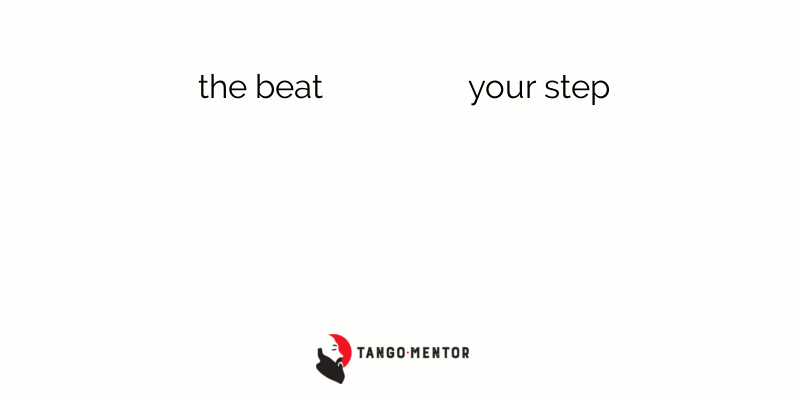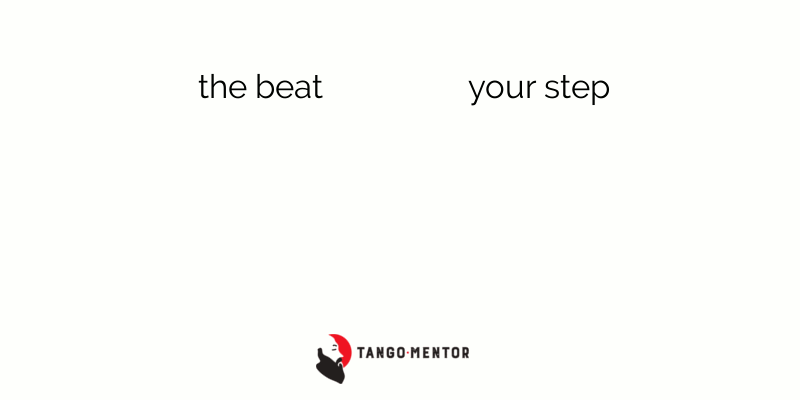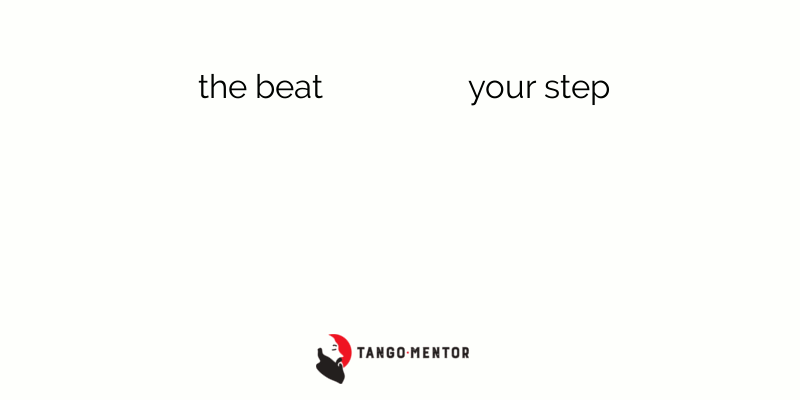
Walking reveals your character, but in tango there is one more thing – it reveals what you feel about the music as well. There are layers and layers of meaning that can be revealed just by watching how a tango dancer walks.
You zoom in and zoom out, and you discover that the picture is not pixelated, but clear and meaningful. The closer you look, the more secrets you discover.
A good dancer you recognize by the way he walks, not by acrobatic figures. – Pablo Veron
This article is about those of you who passed the level of “catching the beat.” It is for those who are little bit more aware of the musicality – no matter how experienced.
“I thought this would be long and boring class, but it turns out there is much more about walking than I thought there is,” he said after the workshop finished.
“I mean, nobody ever told me about these connections between the beat and walking.”
I was pleased that he liked my workshop, but I was also little worried about the state of tango in general. There are people who know this more and better than I do, but I don’t see that it’s being taught as much as dancers need to hear it.
I believe that it’s because you can attract more participants in your workshops if you name them “The secrets of volcadas” or “The secrets of gancho,” than if you have “The secrets of walking.” I mean, if I tell you that we’ll just walk for two hours, you’ll try to find a way not to come to my workshop, even if you paid for it.
But, fortunately there are those who understand the meaning and importance of walking, and the subtle nuances of interpreting the beat. This article covers the basics of this topic, the way I understand it.
1. On-time
This way of walking is the simplest one and it’s easiest to understand. It basically means that your foot is touching the ground the moment the beat starts and it leaves it the moment when it finishes. The time your foot is spending on the ground is equal to the time of the beat.
Focus on this picture few seconds and you will notice how both dots light up in the same time – and they go off in the same time as well.

It’s simple. It’s also very neutral and, I would add, empty. Mechanical.
It doesn’t carry any information or emotion since it’s completely aligned with the beat. It’s a perfect replica of what the music does and it can carry the emotion of the music – but, when you dance like this you don’t add any personality to your step. You don’t try to paint the music with your color. You don’t add your emotion to the emotion of the music.
Hey, sorry to interrupt…
Do you like reading my articles? If you do please consider a small contribution to the existence of this blog.
I don’t sell a book or run ads: I share these articles for free. Unfortunately I also have to pay my bills, so if you see value in my work please consider a small donation/gratuity (the same way you tip your favorite bartender).
From my heart to yours!
Ivica
Securely processed via PayPal
2. Early arrival
I would say, it’s more like “early departure.” Similar to the previous example, the foot is touching the ground at the same time as the beat starts… and then, as the beat moves along, it leaves a moment before it finishes.
Focus on this picture little longer than few seconds, until your brain catches the pattern. It helps if you play your favorite rhythmic tango in your head.

If you ask me, I don’t like this way of walking on the beat. It’s often a sign of nervous dancing.
Leaving the beat early means that the dancer is not focused on the present, that he/she is focused on what’s next and not enjoying the present moment.
I believe that when you dance tango there is no future and there is no past (kind of a Zen approach!) What happened before is past and it’s not relevant anymore, and what will happen next is unknown and, also, irrelevant. Good dancers are focused only on this moment.
Of course, if you are a man, you need to have plan for the future steps, but in the same time (I know, it’s a paradox) you are emotionally in the present. For ladies being in the present is even more important – the worst female dancers are those who anticipate their partners’ moves.
Anticipation is a lousy substitution for real connection.
… but!
Early arrival on the beat is not always a sign of nervous dancing. There are situations when it’s the right tool. It’s sometimes very good way for interpretation fast or jolly music. I prefer dancing this way on Rodriguez, Donato etc. This is also a great way to dance milonga.
3. Late arrival
The real thing! Dancers who knows how to do this can spice up their dance with some really heavy tones – just as heavy as the tango music is.
I remember seeing a meme on Facebook of a comparison of Osvaldo Pugliese’s music to a black hole (unfortunately I can’t find it). It’s so heavy, dense and slows you down…
After the beat starts, the dancer is waiting for a moment and then makes fast step to arrive late and leave the floor as the beat finishes.
Focus on the picture for a period. Let your eyes and brain adapt and then try to recognize the pattern. Imagine some dramatic music.

You see, tango is often music painted with heavy emotions. With a lot of passion. With tension and expectations. What happens with this way of walking is that you create tension. When the beat starts and your foot is still not on the ground the expectation is being created; the feeling that something is about to happen.
And then… baaam! The step happens.
If you walk this way you create tension. You fill your dance with emotion and add passion in your moves. This is also very elegant way, and, in my opinion, is one of the best ways to improve your musicality.
This is something which is hard to notice by watching and specially if you’re not an experienced observer. It’s so subtle and so hard to recognize that only trained eye (ear) can spot it. I guess this is not something that show dancers pay attention to (even if many of them are doing it naturally) – why would they if one can’t notice it watching their Youtube videos?

Hello Ivica!
What is your definition of the beat? In my mind it’s an infinitely small moment, so to me it doesn’t have a beginning or an end. When does it start for you and when does it end?
Thank you!
Well, the beat is not just a line that separates the empty void between two beats. It has its lenght… let me ilustrate like this: if you zoom in it will look like something like this visualisation: 1-the moment when the beat (like the hit of the drum for example) is being heard and 0-the void between two beats…
11111000000000000000000001111100000000000000000000111110000000000000000000011111000000000000000000001111100000000000000000000
The drummer can vary the lenght od the beat to change its emotion… the same can do the dancer
The short beat usually in my mind feels happier… long one feels heavy.
The difference between the drummer in a March is?
The drummer makes the beat as his foot touches the ground!
The Dancer greets the beat as the foot touches the ground!
From Drummer to Tango? matter of Give now Greet! H
🙂